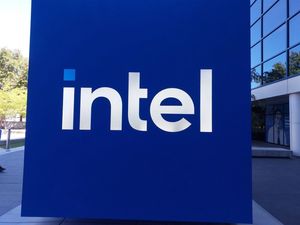
A seismic shift is underway in the global financial landscape, as emerging markets (EMs) increasingly present a compelling case for outperformance, signaling a potential end to the era of unquestioned US economic exceptionalism. This pivotal moment is driven by a confluence of factors undermining traditional US dominance while simultaneously bolstering the appeal of developing economies, with immediate and profound implications for global investors, capital allocation, and the very structure of the international financial system. The long-standing narrative of US market leadership, fueled by tech giants and robust economic growth, is facing unprecedented challenges, paving the way for a rebalancing of global financial power that could redefine investment strategies for the coming decade.
Global investors are now confronted with the imperative to recalibrate their portfolios, moving away from an overconcentration in US assets towards a more diversified approach. This reorientation is not merely a tactical adjustment but a strategic imperative, as the underlying economic fundamentals and market valuations are increasingly favoring regions beyond the United States. The immediate implications include a likely surge in capital flows towards emerging markets, a re-evaluation of currency strategies given a weakening US dollar, and a renewed focus on fundamental analysis to identify specific opportunities within a more complex and diversified global investment universe.
The Fading Star: What Happened and Why It Matters
The ascendancy of emerging markets is a direct consequence of the diminishing luster of US economic exceptionalism, a phenomenon that has underpinned global financial markets for decades. Several critical indicators and events have converged to signal this shift, making it a pivotal moment for global finance.
For years, US economic leadership was propelled by the relentless innovation of its technology sector, a significant energy boom, and robust government spending. However, these engines are now showing signs of peaking. The unchallenged supremacy of US Big Tech, while still formidable, faces increasing scrutiny regarding valuations and competition from global players. The S&P 500's (SPX) price-to-earnings ratio stands significantly above historical averages and considerably higher than those in other developed and emerging markets, raising questions about sustainable growth at current levels. Economically, recent data indicates a loss of momentum, with concerns growing over slowing growth and the potential for stagflation – a challenging combination of high inflation and slow growth. Government efforts to cut federal jobs and rein in spending are further dampening consumer and business sentiment.
Compounding these domestic economic concerns are mounting fiscal vulnerabilities. The ballooning US budget deficit and a national debt that has surpassed an alarming $36 trillion are raising serious questions about the long-term stability of US finances and, by extension, the value of the US dollar. Projected deficits, exacerbated by a Moody's (MCO) downgrade of the US credit outlook, highlight these underlying vulnerabilities. Critically, the US dollar has begun to retreat, experiencing its worst performance in the first half of a calendar year since 1973. Analysts project a further 10% decline by 2026, driven by expectations of lower US interest rates, an eroding yield advantage, and a broader shift in market sentiment away from its role as an invincible global reserve currency.
Geopolitical and trade policy shifts further complicate the picture. Unpredictable trade policies, persistent tariff threats, and uncertainties surrounding US economic policies create a volatile macroeconomic environment, challenging the perception of the US as a stable global economic anchor. The "weaponization" of the financial system through sanctions is also eroding international trust in the dollar, pushing nations to explore alternative reserve currencies and payment systems. This combination of waning tech dominance, economic deceleration, fiscal instability, a weakening dollar, and geopolitical uncertainties collectively explains why the era of US exceptionalism is fading, fundamentally altering the landscape for global capital flows and investment opportunities.
The Shifting Tides: Who Wins and Who Loses
The rebalancing of global financial power from the US to emerging markets will inevitably create distinct winners and losers across various sectors and geographies. This monumental shift necessitates a careful re-evaluation of investment strategies, emphasizing diversification and a keen eye on fundamental strengths in a less US-centric world.
Among the likely winners are emerging market economies and their domestic companies. Countries like India (BSE SENSEX), Brazil, Mexico, China, and South Korea are particularly well-positioned. India, with its robust domestic consumption and growing technological prowess, stands to gain significantly. Brazilian (BVMF: IBOV) and Mexican (BMV: MEXBOL) companies could benefit from improved trade relations and manufacturing shifts. Chinese (SSE: 000001) tech and consumer companies, despite recent regulatory headwinds, possess immense scale and innovation potential, especially as the domestic economy stabilizes and stimulus measures take effect. South Korean (KRX: KOSPI) technology giants, already global leaders in semiconductors and electronics, will find their exports more competitive with a weaker dollar. Sectors poised for growth in these regions include technology, pharmaceuticals, and infrastructure, driven by burgeoning middle classes, digitalization, and government investment. Companies with significant dollar-denominated debt in these countries will also benefit from a weakening dollar, as their repayment burden decreases, improving their financial health and allowing for greater investment.
Conversely, some traditional US-centric investments and sectors could face headwinds. US technology giants (NASDAQ: QQQ), which have enjoyed an unparalleled run, might see their premium valuations challenged as global capital seeks more attractive opportunities elsewhere. While still dominant, their growth trajectory might normalize as competition from emerging market innovators intensifies and regulatory scrutiny increases. US-focused consumer discretionary companies could also face pressure if domestic economic growth slows more significantly. Furthermore, any US company with substantial export revenues might find their products more expensive for international buyers if the dollar continues to weaken, potentially impacting their global competitiveness. Financial institutions heavily exposed to US government debt or solely reliant on US market performance could also experience reduced growth prospects in a less exceptional US economy. The broader implication is that a passive, US-heavy portfolio might underperform a globally diversified one, challenging the investment thesis that has dominated the past decade.
Moreover, a weaker US dollar directly benefits commodity-exporting emerging markets, as commodities are typically priced in dollars. This could provide a boost to economies rich in natural resources, such as those in Latin America and parts of Africa, whose national companies (e.g., in mining, oil, and gas) could see increased revenues and profitability. Conversely, countries that rely heavily on imports priced in a stronger local currency might face inflationary pressures, though a generally weakening dollar against a basket of currencies could mitigate this for many. The key takeaway is that the investment landscape is becoming more granular, demanding a deeper understanding of specific country and company fundamentals rather than broad-stroke assumptions based on past US market performance.
Global Ripple Effects: Industry Impact and Broader Implications
The fading of US exceptionalism and the subsequent rise of emerging markets signifies more than just a shift in investment flows; it represents a profound reordering of the global economic and financial architecture. This event fits into a broader trend of deglobalization and the emergence of a multipolar world order, where economic power is increasingly distributed among several major blocs rather than concentrated in one.
This rebalancing will have significant ripple effects across industries. Multinational corporations, particularly those with global supply chains, will need to re-evaluate their strategies. Companies heavily invested in US manufacturing or services might explore expanding operations in emerging markets to tap into new consumer bases and benefit from potentially lower operating costs or a weaker dollar making their investments more valuable. Technology companies, regardless of their origin, will face a more competitive global landscape, fostering innovation but also potentially leading to pricing pressures. The financial services industry will see a greater demand for expertise in emerging markets, driving new product development in EM-focused funds, indices, and advisory services. Furthermore, the "weaponization" of the US dollar through sanctions has spurred many nations to seek alternatives, accelerating the development of local currency payment systems and potentially strengthening regional economic blocs. This could lead to increased trade among emerging market countries, further reducing reliance on traditional Western-dominated financial channels.
Regulatory and policy implications are equally substantial. As global capital flows shift, emerging market governments may face increased pressure to implement market-friendly policies, enhance corporate governance, and ensure regulatory stability to attract and retain foreign investment. Simultaneously, the US might consider policies aimed at bolstering its competitiveness and restoring investor confidence, though the political will and economic levers for such a significant reversal are uncertain. The move towards a multipolar monetary system, with the Euro (EUR), Chinese Yuan (CNY), and potentially even new digital currencies playing larger roles, will necessitate international cooperation on financial regulations and exchange rate stability. This complex environment could lead to increased scrutiny of cross-border transactions and a push for greater transparency in global financial dealings.
Historically, periods of shifting economic dominance have often been accompanied by increased market volatility and geopolitical tensions. The current scenario shares parallels with the rise of Japan and Germany in the post-war era, which challenged US industrial might, albeit without the same degree of financial and monetary re-evaluation. More recently, the Asian Financial Crisis of 1997-98 highlighted the vulnerabilities of emerging markets, but also their resilience and capacity for reform. Unlike those past events, the current shift is driven by a broader, more structural decline in US relative economic power, coupled with the fundamental strengthening of many emerging economies. This makes the present rebalancing potentially more enduring and transformative, setting the stage for a prolonged period of adjustment and opportunity.
The Road Ahead: What Comes Next
The current trajectory suggests that the global financial landscape will continue to evolve rapidly, presenting both formidable challenges and significant opportunities in the short and long term. For investors, businesses, and policymakers, understanding what comes next is crucial for strategic planning.
In the short term, we can anticipate continued volatility in currency markets, with the US dollar likely experiencing further weakness against a basket of global currencies. This will make emerging market assets more attractive and could trigger a "wall of money" seeking higher returns outside the US. Expect to see increased inflows into EM equities and bonds, particularly from institutional investors who are currently under-allocated to these markets. Central banks in emerging economies may find more room to cut interest rates, stimulating local economies and stock markets. However, short-term challenges could include managing increased capital inflows, which can lead to inflationary pressures or asset bubbles if not carefully managed by EM policymakers. Geopolitical tensions, particularly related to trade and technology, could also continue to create pockets of uncertainty, requiring active risk management from investors.
Looking further ahead, the long-term possibilities point towards a sustained rebalancing of global economic power. The current trends could solidify the position of several emerging market economies as major global growth engines, fostering a more diversified and resilient global economy. This might necessitate strategic pivots for multinational corporations, focusing on localization, regional supply chains, and direct investment in emerging markets to capture growth. New market opportunities will emerge in sectors catering to the rising middle classes in Asia, Latin America, and Africa, including consumer goods, financial services, healthcare, and digital infrastructure. Challenges will include navigating diverse regulatory environments, managing geopolitical risks, and adapting to new cultural and business norms. The shift towards a multipolar monetary system will likely accelerate, with the Euro, Chinese Yuan, and potentially new regional currencies gaining more prominence, necessitating a more complex approach to international finance and trade.
Potential scenarios and outcomes range from a gradual, orderly rebalancing to more disruptive shifts. In an optimistic scenario, a coordinated global effort could facilitate a smooth transition, leading to a more stable and diversified global economy. In a more challenging scenario, protectionist policies, trade wars, and uncoordinated monetary policies could lead to increased fragmentation and heightened global economic instability. Investors should watch for key indicators such as the trajectory of US interest rates, the strength of the US dollar, economic growth data from major emerging markets, and any significant shifts in trade or foreign policy from major global powers. Adaptability, diversification, and a deep understanding of country-specific fundamentals will be paramount for navigating this evolving landscape successfully.
The Dawn of a New Financial Era: Conclusion
The fading of US exceptionalism and the simultaneous emergence of a compelling investment narrative for emerging markets marks a significant inflection point in global finance. The key takeaway is that the decades-long paradigm of US-centric market leadership is yielding to a more diversified and multipolar economic reality. Investors can no longer rely on the singular dominance of US assets to drive portfolio returns; rather, a proactive and globally diversified approach is becoming not just advisable, but essential.
Moving forward, the market will likely be characterized by increased differentiation between individual countries and companies, even within the broad "emerging market" category. Generic exposure will be less effective; instead, a focus on specific regions and sectors with strong fundamentals, sound governance, and structural growth drivers will be critical. The weakening US dollar acts as a powerful tailwind for emerging markets, easing debt burdens, boosting competitiveness, and enhancing local currency returns. This, combined with attractive valuations and improving fiscal dynamics in many developing economies, positions them for a period of potential outperformance.
The lasting impact of this shift could be the establishment of a more balanced and resilient global financial system, less susceptible to the singular shocks of any one economy. It signals a move away from the "TINA" (There Is No Alternative) mindset that has often channeled capital disproportionately into US markets. Investors should vigilantly watch for central bank policy shifts, particularly from the US Federal Reserve (FED), ongoing developments in international trade relations, and the continued progress of reforms and growth initiatives within key emerging market economies. The coming months and years will demand strategic foresight and a willingness to embrace change, as the global investment landscape redefines itself in profound and lasting ways.








